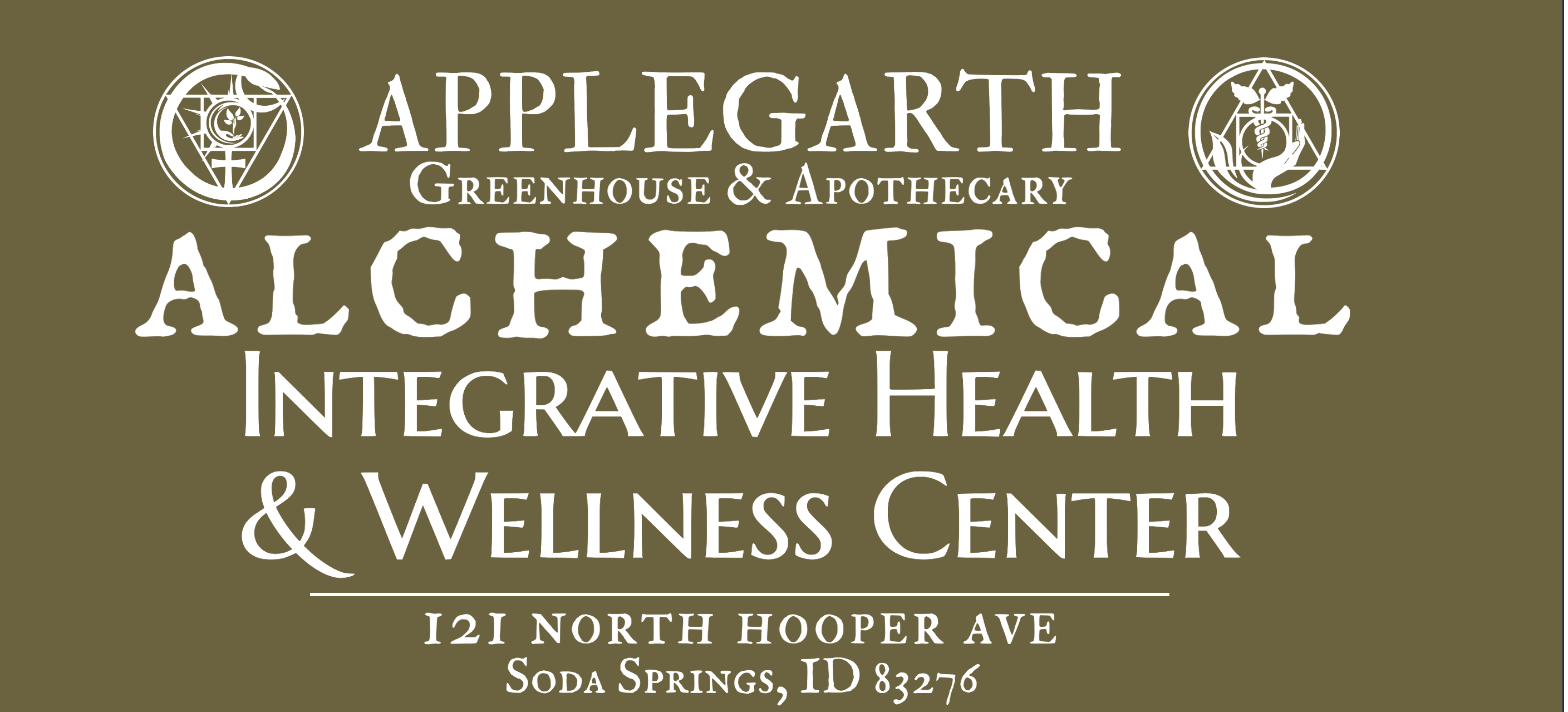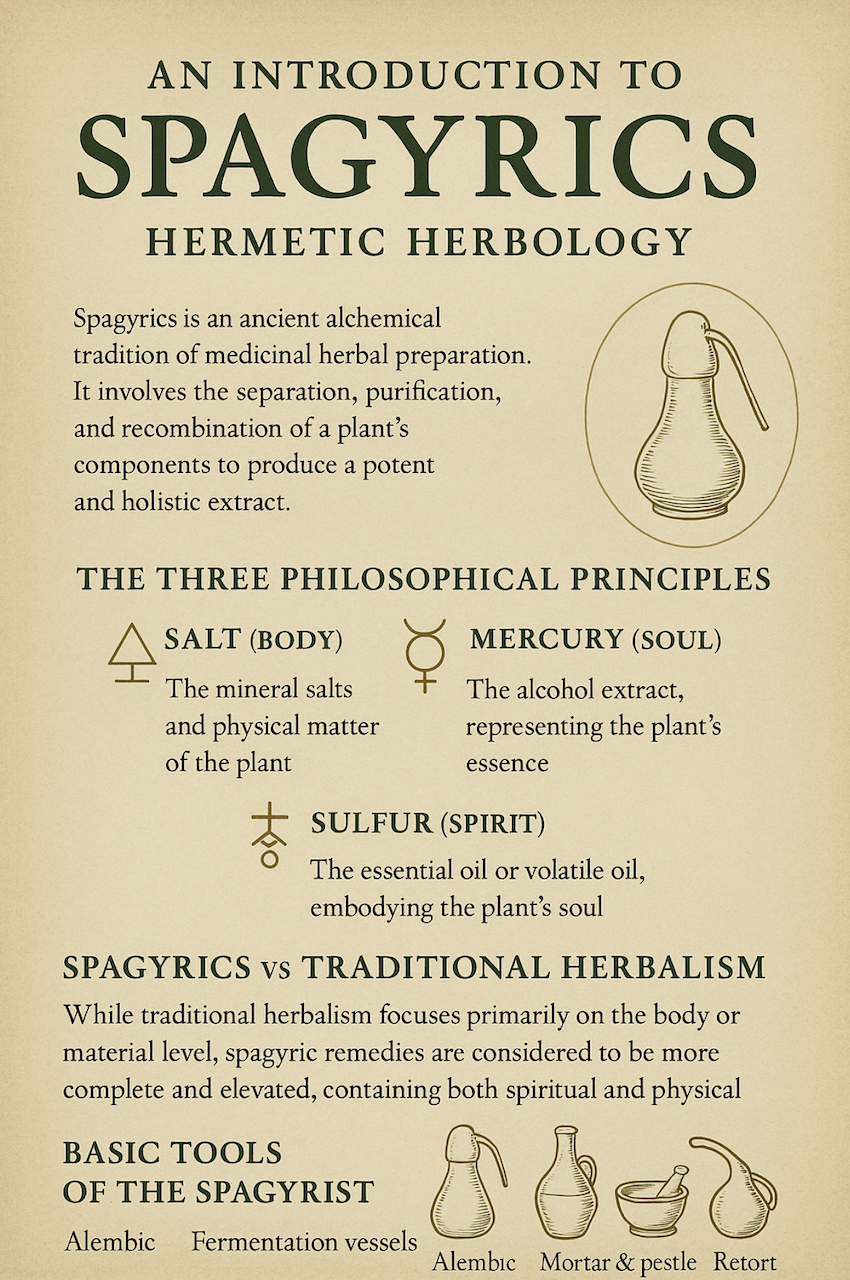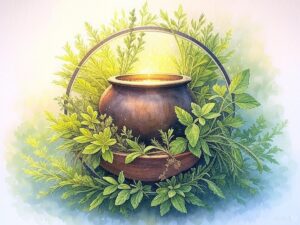Introduction to Spagyrics: Hermetic Herbalism
In the heart of ancient alchemical tradition lies a sacred branch of plant medicine known as Spagyrics. Rooted in Hermetic philosophy and developed during the European Renaissance, Spagyrics is more than herbalism—it is the soulful distillation of Nature’s wisdom, merging the healing powers of plants with the spiritual ascent of the human being.
What Is Spagyrics?
The word Spagyrics was coined by the Swiss physician-alchemist Paracelsus, derived from the Greek words spao (to draw out) and ageiro (to recombine). True to its name, Spagyrics involves separating the components of a plant—body (Salt), soul (Mercury), and spirit (Sulfur)—and recombining them in a purified and elevated form.
In this sacred science, every herb is a microcosm of the greater universe. Through fire, water, and intention, the practitioner releases its essence, transforming raw plant matter into potent alchemical preparations that heal not just the body, but the spirit and mind.
The Three Philosophical Principles
Central to Spagyric practice are the Three Essentials, the Tria Prima of Hermetic Alchemy:
- Salt (Body) – The mineral or fixed physical substance of the plant, often extracted through calcination (burning to white ash). It represents the form and structure.
- Mercury (Soul) – The alcohol or volatile principle, usually captured through fermentation and distillation. It symbolizes the plant’s intelligence and communicative essence.
- Sulfur (Spirit) – The essential oil or aromatic principle, drawn through distillation. This is the plant’s animating life force—its unique energetic signature.
By skillfully purifying and recombining these aspects, the alchemist births a new spagyric tincture—a living medicine aligned with both the celestial and terrestrial realms.
How Is Spagyrics Different from Traditional Herbalism?
While herbalism often focuses on the biochemical effects of plants, Spagyrics treats the whole being. It is both a science and an initiatory path—using plants not only to remedy imbalance but to guide the soul toward spiritual integration.
In traditional herbal tinctures, only the alcohol-soluble constituents are captured. In Spagyrics, the salt (plant ash) is also purified and returned, making the remedy holistic, elevated, and energetically complete.
Basic Tools of the Spagyrist
A beginner’s Spagyric lab might include:
- Glass distillation apparatus (alembic or condenser)
- Fermentation vessels for creating alcohol from plants
- Mortar and pestle, crucible, and heat source for calcination
- Retorts and flasks for extraction and recombination
- Spring water and high-proof ethanol as solvents
Most importantly: patience, precision, and reverence
This is not a path for hurried remedies. It is a sacred dance between fire and essence, matter and spirit.
The Hermetic Roots of Spagyrics
Spagyrics is built on the Hermetic axiom, “As Above, So Below.” It sees every plant as a bridge between Earth and Cosmos, with planetary correspondences that align with astrological forces.
In this worldview:
- Rosemary may correspond with the Sun (vitality, clarity)
- Mugwort with the Moon (dreams, intuition)
- Nettle with Mars (courage, blood)
By understanding these alignments, a spagyrist can craft formulas that resonate not only with the patient’s body, but also with their soul’s astrological blueprint.
Why Learn Spagyrics Today?
We are in an age of reawakening—where ancestral wisdom is returning to meet modern seekers. Spagyrics invites us to reclaim our relationship with the plant kingdom, to walk in harmony with Nature, and to remember that healing is both a physical and a spiritual endeavor.
Whether you’re an herbalist, an alchemist, or simply a lover of sacred Earth traditions, Spagyrics offers a path of healing that is as deep as it is transformative. In the fire of the alembic, we meet not only the essence of plants—but our own.
Final Thoughts
The study of Spagyrics is a lifelong journey. It teaches discipline, reverence, and humility before the living wisdom encoded in nature. Through this ancient art, we don’t just make medicine—we become the medicine.



